1720
Bavaria had been keen to join Europe's academy movement since the start of the 18th century. The Academia Carola Albertina, an early forerunner of the Bavarian Academy of Sciences and Humanities, was founded in 1720 but was not in existence for very long.
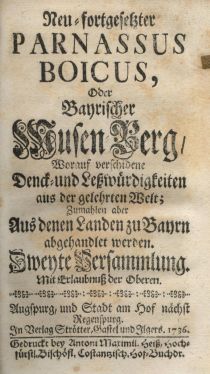
1722
Founded in 1722, the “Parnassus Boicus oder neu-eröffneter Musenberg” society (Parnassus Boicus or Bavarian Mountain Muse society) was another precursor to the Bavarian Academy of Sciences and Humanities. Its members were learned lay people and clerics, primarily Augustinian canons and hermits. Their brand of enlightened, secular Catholicism defined the Bavarian academy movement's particular roots. The society published a journal under the same name. Five volumes were produced in the time up until 1740. Its aim was to investigate the natural world and promote Bavarian history.
Production of Parnassus Boicus was halted due to the outbreak of war. The last edition was published in 1740. No other institution that could have furthered the idea of critical research into history and the natural world emerged for quite some time after this.
The 1759 founding charter of the academy refers explicitly to the Parnassus Boicus.
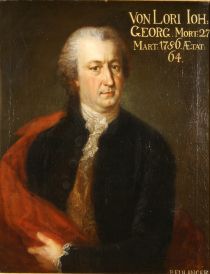
1758
To ensure this new appreciation of the sciences and humanities in Bavaria continued into the future, Johann Georg von Lori (1723–1787), court councillor at the Mint and Mining Commission in Munich, founded the “Bayerische Gelehrte Gesellschaft” (Bavarian Scholarly Society) as a successor to Parnassus Boicus on 12 October 1758.
Right from the start, the founding members wanted the society to be elevated to the status of a royal academy, dedicated to research and scientific progress.
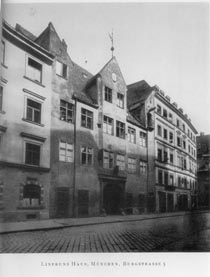
1758
In addition to Johann Georg von Lori, the academy's founding members also included Royal Mint and Mines Councillor Dominicus von Linprun and honorary business councillor Franz Xaver Stubenrauch. Lori drew up a charter that clearly tended towards the structure of an academy.
Sigmund Graf von und zu Haimhausen was the first president of the Bavarian Scholarly Society. He was also head of the Bavarian Mint and Mines Commission (and as such Loris's superior). His good connections to the court gave the society access to the Elector.
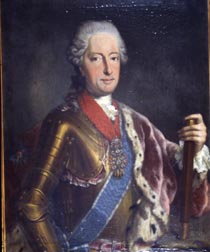
1759
The founding charter of the Bavarian Academy of Sciences and Humanities was signed by Maximilian III Joseph, Elector of Bavaria, on 28 March 1759, the date of his birthday. He confirmed the academy's statutes on 25 June 1759. The academy was initially financed from taxes.
The academy was the first major public scientific institution funded by the state ruler to be established in the royal seat of Munich. At this time, the university was still based in Ingolstadt.
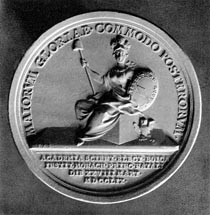
1759
From the very beginning, the academy chose not to take religion or nationality into consideration when choosing members. Instead, prospective members had to submit a paper, which had to be accepted by the academy. Nineteen of the eighty-eight members in the founding year were protestant – and this was at a time when protestants were unable to gain citizenship in Munich.
Members were split into two classes, a historical class and a philosophical class (today, there are four sections). The first class was tasked with collating, collecting and critically reviewing official documents or deeds, letters, inscriptions and antiquities. It was also responsible for researching the history of Bavaria and creating dictionaries.
The second class was responsible for researching the natural world, collecting natural objects or works in Germany and abroad and chemically analysing them as well as distributing scientific findings and inventions for the benefit of agriculture, trade, mining and metallurgy. Further tasks included submitting proposals for surveying land, astronomical observations, the application of meteorological methods for investigating the natural world, water management and calendar systems as well as statistical functions.
1760
During these first years, the academy does not have its own premises. Members initially meet at Burgstrasse 5 and then in the apartment of President Haimhausen. Later, the academy meets in rooms next to the court library.
In 1760, the academy moves into its first permanent home near the Schwabing city gate. The property is owned by the Fugger family and located between Theatinerstrasse and Faulhaberstrasse (today the site of the Fünf Höfe centre).
1761
On 6 June, the academy invites guests to witness a very rare event at its observatory located in a part of the city known as the Rockerl (which is today on the site of Bavaria's Highest Building Authority). This high-profile public demonstration of Venus transiting across the sun brings the academy's research activities to the attention of Munich's wider population for the first time.
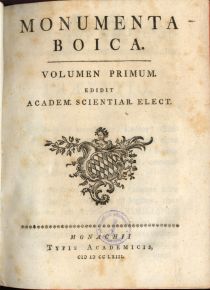
1763
The academy starts collecting and editing old Bavarian documents in its Monumenta Boica journal. This work shapes the organisation’s special focus on history and establishes Munich’s position as a centre for historical studies in Germany. The first volume was published in 1763. Today, the collection covers around 100 extensive volumes.

1779
In 1779, the academy establishes a belletristic class in addition to its historical and philosophical class. The new class is dedicated to literature, theatre, language and the fine arts. However, it is shut down a few years later in 1785 under the rule of Charles Theodore, Elector of Bavaria, when several of its members are suspected of belonging to the Illuminati Order, which is banned in 1785.
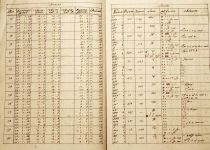
1781
The academy starts making systematic meteorological observations as far back as 1759. From 1781 on, it moves these activities to Hohe Peißenberg mountain to the southwest of Munich and also publishes its results. The Bavarian meteorological observatory wasn’t integrated into a national body until 1934, when it became part of the newly founded Reich Weather Service. Today, it is run by Germany's National Meteorological Service.
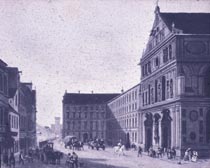
1783
The academy moves to the Wilhelminum, a spacious college building on Neuhauser Strasse that used to belong to the Jesuit order before it was dissolved. It remains here until the Second World War.
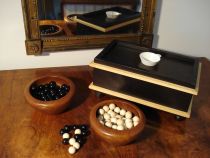
1786
On 21 March, the members of the academy use a ballot box for the first time for its annual election.
This system is an effective, secret ballot that uses black and white wooden balls. Voting members use a white ball to vote yes and a black ball to vote no. The academy uses this procedure to this day to select its members.
1800
The Topographical Office is founded with the purpose of carrying out land surveys. The academy did not have any institutional powers in the new office, but several of its members made key contributions (for example Brander, Riedl, Schiegg).
1802
The philosophical class changes its name to the physical class.
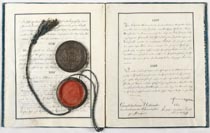
1807
Under the regency of Maximilian I Joseph (1806 - 1825), the academy transitions from an independent organisation of scholars to a state-owned central institution with a new constitution and a staff of full-time government officials on fixed salaries. It is put under the direct control of the Interior Ministry.
1807
The scientific collections and institutes of the State of Bavaria are incorporated into the academy as "attributes". This affects a number of organisations, in particular the central library, the natural history collection, the chemical laboratory, the mint office and antiquarium, the Bogenhausen observatory, the botanical garden and the anatomical theatre. The academy also receives the assets of the Mannheim Academy, which has been closed down.

1807
Joseph von Baader is appointed the first curator of the academy's polytechnic collection. He remains in this post until 1817.
1807
The Commission for Research into German Antiquities is founded and remains in existence until 1827.

1812
President Friedrich Heinrich Jacobi resigns from his post following disagreements with Friedrich Wilhelm Joseph von Schelling (1775-1854). The academy is headed by Secretary General Friedrich von Schlichtegroll (1765-1822) until 1822.

1816
Construction gets underway on the Bogenhausen observatory, which starts operations on 4 January 1818. Johann Georg von Soldner is the first director.
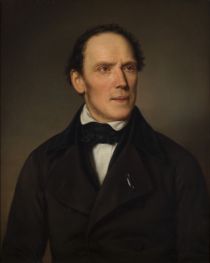
1816
Andreas Schmeller starts work on the Bavarian Dictionary, initiating a research project that is still in progress today. This work also lays the foundation for the first philology-based German-language dictionary.

1817
This decade represents a high point in scientific research. Key innovations include the development of high-precision optical instruments by Joseph von Fraunhofer, the water column engine by Georg von Reichenbach and the galvanic telegraph by Samuel Thomas von Sömmering.
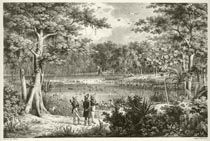
1817
The two academy members Johann Baptist Spix and Karl Friedrich von Martius set off on a research expedition to Brazil. They return in 1820 with a large collection of plants for the botanical gardens in Munich.
1819
The Society for Older German History starts work on a comprehensive series of primary sources from the German Middle Ages known as the Monumenta Germaniae Historica (MGH). Under the direction of historian Georg Heinrich Pertz (1795-1876), this work plays a key role in bringing German medieval studies to the international stage.
1826
In 1826, the Bavarian State University moves from Landshut to Munich. The academy now has access to a much wider pool of scholars than ever before. Its academic and scientific endeavours become increasingly professional as a result.
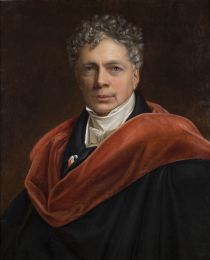
1827
Under King Ludwig I (1786-1868), the academy returns to its roots as an independent community of scholars and a research hub. Its members are released from public service. The “attributes” are removed from the organisation. Some are consolidated into a newly created general academy, which was also headed by the president of the academy until 1936. Other attributes are incorporated into the study collections at the University.
King Ludwig I appoints Friedrich Wilhelm Schelling as president of the academy.
1827
The polytechnic collection, formerly an attribute of the academy, becomes a "central polytechnic institute". This is a forerunner of the technical college which later becomes the Technical University of Munich as it is known today.
1841
King Ludwig I remains involved in the running of the academy and reserves the right to appoint the president and six members in every class. This represents a massive infringement of the academy's independence.
1843
The academy and the university's palaeontological collections are consolidated to create the Bavarian State Palaeontology Collection.
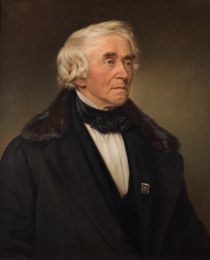
1848
Maximilian II ascends the throne. The academy and its new president, Friedrich Wilhelm von Thiersch, demand that the new king rescind the royal right to intervene in administration affairs.
1849
The academy is given back its right to select its members.
1849
Maximilian II founds the Natural Sciences and Technology Commission.
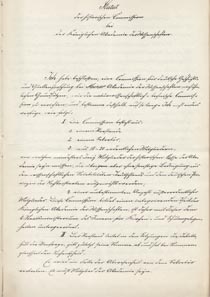
1858
Maximilian II founds the “Historische Kommission bei der Bayerischen Akademie der Wissenschaften” (Historical Commission at the Bavarian Academy of Sciences and Humanities). The commission is still in existence today, looking back on a wealth of fundamental source editions under its management.
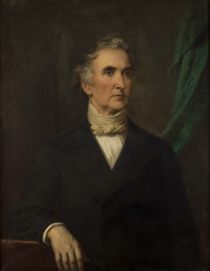
1859
Justus von Liebig, from the town of Gießen, is appointed president of the academy. His public evening lectures in the Liebig auditorium help make academic research popular among the general public.
1860
The first minutes from meetings are published in 1860. These reports are still regularly published today.

1868
The Bavarian Commission for International Geodesy is founded. The Prussian officer and geodesist Johann Jakob Baeyer (1794-1885) is the driving force behind this initiative. Important figures in geodesy at the time include Carl Maximilian von Bauernfeind (academy member since 1865), mathematician Ludwig von Seidel and physicist Philipp von Jolly (1809-1884). In 1885, the commission is expanded, becoming the international geodesy project which is still in existence today.
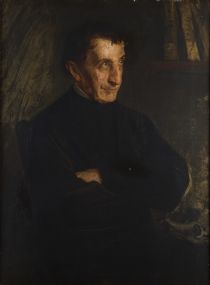
1873
During the presidency of the theologian Ignaz von Döllinger (1873-1890), a culture of private patronage starts to gain momentum across the academy. The Liebig Foundation is the first undertaking of this kind. By 1914, private foundations cover half of the academy's financial needs. They enable major projects to be pursued, including Adolf Furtwängler's archaeological excavations in Aegina and the relocation of the botanical gardens to Nymphenburg in 1912.
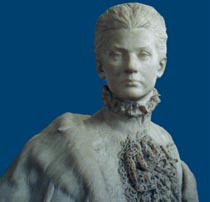
1892
Princess Theresa of Bavaria becomes the first, and to date only, female honorary member of the academy under the presidency of Max von Pettenkofer (1890-1899). After several disagreements regarding the acceptance of female members in general, she was awarded membership in recognition of her research in the fields of anthropology, zoology and botany.

1893
The Commission for the Publication of the Thesaurus Linguae Latinae was the academy's first major humanities project within the framework of an international collaboration with academies in Berlin, Göttingen, Leipzig, Munich and Vienna. The central editorial office was established at the academy in 1899, supported by more than 30 academies and scholarly associations in Germany and abroad since 1949.
1893
The thus-far informal collaboration between German-speaking academies (Göttingen, Leipzig, Munich and Vienna) is formalised with the creation of the Cartel organisation. The academy in Berlin joins the group in 1906 and the Heidelberg academy in 1909/11
1900
The Commission for the Publication of the Corpus of Greek Documents from the Middle Ages and the Modern Period is founded.

1901
Wilhelm Conrad Röntgen, the discoverer of x-rays, is awarded the first Nobel Prize for physics and becomes the academy's first Nobel Prize winner.t gleichzeitig auch der erste Nobelpreisträger der Akademie.
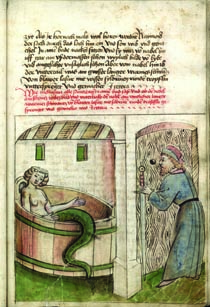
1906
The Commission for the Publication of Medieval Library Catalogues is founded. From 1932/33, it operates as the Commission for the Publication of Medieval Library Catalogues in Germany and Switzerland.

1909
The academy celebrates its 150th anniversary with a special lecture held by historian Karl Theodor von Heigel in the ceremonial hall of the Wilhelminum in the presence of Prince Regent Luitpold.
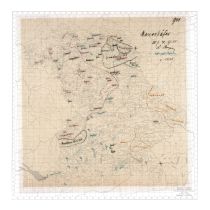
1911
The Commission for the Creation of Bavarian Dictionaries and for Research into Bavarian Dialects is founded. From 1942 on, the organisation is called the Commission for Dialect Research and concentrates on creating a Bavarian, East Franconian and Rheinland Palatinate Dictionary.
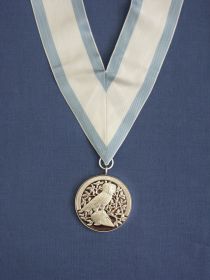
1911
The academy's Bene Merenti medal of merit is created by Theodor von Gosen (1873-1943), professor at the Academy of Art in Breslau. The medal comes in gold, silver and bronze. The gold medal is smaller than the silver and bronze medals. The silver medal is awarded most frequently. The gold medal is almost exclusively reserved for statesmen or stateswomen.
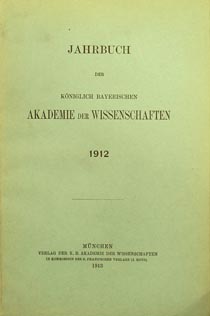
1912
The first edition of the academy’s yearbook is published. The first yearbooks mainly report on the academy's broad range of collecting activities and extensive preparatory work. Today, the yearbook focuses on accountability, providing information on how efficiently the organisation operates based on its progress towards the goals it has set.
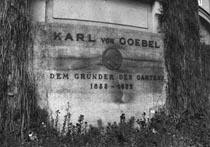
1912
The Munich Botanical Gardens open. The gardens are the brainchild of Privy Councillor and academy member Professor Dr. Karl von Goebel.

1912
The Commission for the Collection and Editing of Soldiers' Songs is set up under the presidency of Karl Theodor Ritter von Heigel (1904-1915). It concludes its work in 1925. The Commission for the Publication of an Encyclopaedia of Mathematical Sciences is also founded and remains in existence until 1949.
1914
The Commission for the Planned Apparatus Criticus on the Koran starts its work and continues until 1950.
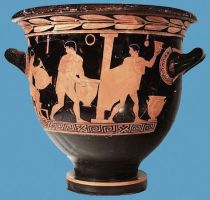
1921
The Commission for the Corpus Vasorum Antiquorum is founded during the presidency of Hugo Ritter von Seeliger (1919-1923). The Commission is still active today.
1923
Inflation devalues almost all of the academy's funds from patrons. The loss of these assets prompts the academy to put a stop to virtually all competitions and funding for expeditions.
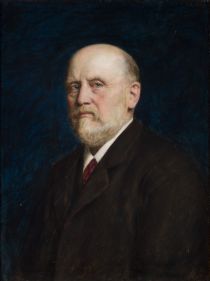
1923
President Ritter von Seeliger merges the philosophy and philology class with the historical class to create the philosophical and historical class.
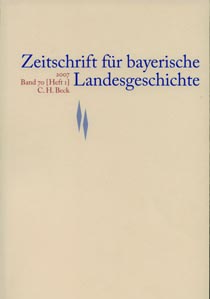
1927
The Commission for Bavarian Regional History and the Institute for Ethnology are founded following a decree from the Bavarian state government.
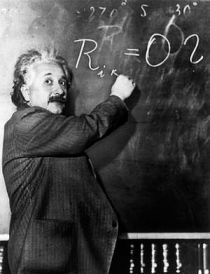
1933
In April, Albert Einstein cancels his corresponding membership under pressure from the academy. The minutes of the philosophical and historical department merely record the following matter-of-fact statement: "The corresponding member of department II, Mr. Einstein, has left the academy."
1933
Jewish employees of the academy and its commissions are dismissed in conjunction with the Law for the Restoration of the Professional Civil Service, which is enacted on 7 April.
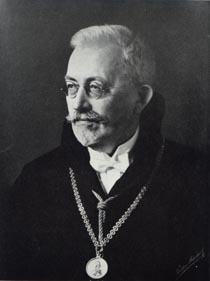
1935
The Commission for the Publication of Works by Johannes Kepler is founded under the presidency of Leopold Wenger.
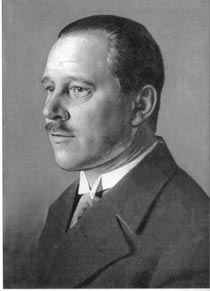
1936
On 2 March, Historian Karl Alexander von Müller is appointed president by the Reich Minister of Culture Bernhard Rust.
1936
The subject of permanently removing the scientific collections from the academy is repeatedly discussed for cost and administrative reasons. However, this is not done until 1936. Biologist Max Dingler (1883-1961), non-tenured professor of biology in Gießen and member of the National Socialist German Workers' Party (NSDAP) is appointed provisional General Director of the Bavarian Natural History Collections. In 1945, Dingler is relieved of his position. The idea of returning the collections to the academy is discussed but never carried out.
1938
Jewish members Lucian Scherman (1864-1946), Alfred Pringsheim (1850-1941), Richard Willstätter (1872-1942) and Heinrich Liebmann (1874-1939) are excluded from the academy.
The following members resigned “voluntarily”:
Full members: Johannes Sieveking (1869-1942), Karl Walter Brecht (1876-1950)
Corresponding members: Eduard Norden (1868-1941), Otto Hintze (1861-1941), Ernst Bernheim (1850-1942), Kurt Hensel (1861-1941), Georg Bredig (1868-1944), Medea Norsa (1876-1952).
From 1941 onwards, the “non-Aryan” corresponding members who live abroad are simply struck off the lists without being informed.
Max Förster, Erich von Drygalski and Rudolf Pfeiffer remain at the academy despite having Jewish ancestors.
The following members who are still alive at the end of the War are reinstated in 1945 with all associated rights: Walter Brecht, Kazimierz Fajans and Rudolf Pfeiffer.
1939
The Commission for the Corpus of Prehistoric Circular Ramparts in Southern Germany is founded and remains in existence until 1952.
1939
The Reich Ministry of Science releases a new charter on 12 July that significantly restricts the academy's right to choose its own members. The academy president had not been elected since 1936. Instead, this role was appointed by the Reich minister. The new charter now abolished the ballot process based on black and white balls. From 1940 on, new members are selected from a list.
1939
The Commission for the Publication of a Medieval Latin Dictionary is founded.
1940
In the academy’s electoral meeting and under pressure from the Bavarian Ministry of Culture, six candidates are elected who have not been proposed by the two classes: Walther Wüst, who had previously been rejected in the electoral meeting of the philosophy and history department, Lutz Pistor (Chancellor of the Technical University), philologist Franz Dirlmeier, the botanists Friedrich Boas and Friedrich von Faber and physicist Rudolf Tomaschek.
The minutes of the general meeting held on 1 June state that the academy agrees to “comply with the wishes of the state minister” and to “use the supplementary list to select members en masse across the entire academy without assessing scientific merit on an individual basis”.
1940
The Commission for the Corpus philosophorum medii aevi is founded and remains in existence until 1954.

1944
Mariano San Nicoló is appointed president on 26 November.

1944
The academy building in Neuhauser Strasse, Munich, is completely destroyed in a bombing raid in the night of 23/24 April 1944. All work at the academy comes to a halt.
1945
Facing expulsion following internal investigations initiated by the academy, Karl Alexander von Müller resigns “voluntarily” from the academy on 23 September. Müller resigns from his position as secretary of the Historical Commission at the Bavarian Academy of Sciences and Humanities in December 1945. Six months later, he also steps down from the Commission.
1946
On 25 July, the military government permits the academy and many of its Commissions to resume the full scope of their scientific activities.

1946
After denazification, the academy moves into a temporary home at Maria-Josepha-Strasse 11 in Munich under the presidency of Walther Meißner. Lack of paper is a major problem that hampers research work.

1946
Researchers on the Thesaurus Linguae Latinae project resume their work in the Scheyern Abbey and in Icking, which serve as temporary bases following the complete destruction of the project rooms in Munich.

1946
The Commission for Research into Cuneiform Texts and Near East Archaeology is founded. One of the key aims of the Commission is to provide a uniform, factual and formal platform for investigations into cuneiform texts. In 1993, the department was renamed the Commission for Research into Cuneiform Texts and Near East Philology.

1946
The Commission for Low Temperature Research is founded at the suggestion of academy member Klaus Clusius (1903-1963), professor of physical chemistry at the Ludwig Maximilian University Munich, and Walther Meißner (1882-1974), professor of technical physics at the Technical University of Munich and President of the academy from 1946 to 1950.
The Commission runs the Walther-Meißner-Institute for Low Temperature Research. The key fields of research here include superconductivity, isotope separation and the magnetic properties of matter.
1946
The first annual meeting after the Second World War takes place in the hall of the Brunnenhof Theatre.
1948
The Commission for Onomastics is founded (prior to 1962: Commission for Research into Place Names).
1948
The Commission for Language Preservation is founded. Up until 1971, the Commission is involved in the German spelling reform and puts together an index of vocabulary on contemporary language. The Commission provides advice to authorities and schools in issues relating to contemporary language and language history.
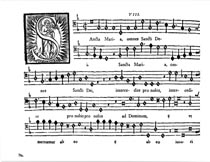
1949
The Music History Commission is founded to oversee two major projects: The first involves the production of a complete edition of the manuscripts and prints of the composer to the Munich court Orlando di Lasso. This multi-volume edition also includes an extensive index of his works. The Commission also creates the “Lexicon musicum Latinum medii aevi”, which focuses on musical terminology from the 9th century to the end of 15th century.
1949
By 1955, the prehistoric collection, Egyptian collection and coin collection have been removed from the academy together with the museum for ethnology and the museum for casts of classical sculptures. The natural sciences collections are placed under the management of the Bavarian Natural History Collections.
1950
The German Geodetic Commission is founded. The Commission operates the German Geodetic Research Institute, which takes part in international geodetic activities and represents the German geodesy community at international conferences.
1950
The Munich branch of the Commission for the Publication of German Inscriptions from the Middle Ages and the Early Modern Period is founded.
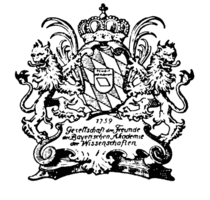
1950
The new Society of Friends of the Bavarian Academy of Sciences and Humanities is founded to improve the academy's strained financial situation and to help it source at least some of the funds it needs to carry out its many different activities.
1950
The Commission for the Publication of the Collected Mathematical Works of C. Caratheodory is founded and remains in existence until 1957.
1950
The Wendelstein Observatory Commission is founded and collects meteorological data and other measurements on the Wendelstein mountain until 1974.
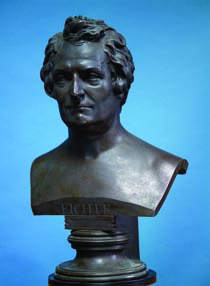
1957
Foundation of the Commission for the Publication of the Fichte bequest.
1957
Foundation of the Commission for Comparative Archaeology of the Roman Alps and Danube Countries (pre-1998: Commission for Archaeological Research into Late Roman Rhaetians).
1957
The Commission for the Publication of an Index on the Novels of Justinian is founded and remains in existence until 1992.
1959
The Bavarian Minister for Teaching and Culture, Prof. Dr. Theodor Maunz, awards the academy the status of an organisation under public law (Körperschaft des öffentlichen Rechts) on its 200th anniversary.
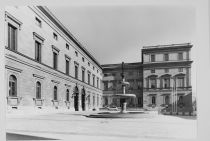
1959
On its 200th anniversary, the academy moves into its new home in the north-east wing of Munich's Residenz palace, which was built by Leo von Klenze. The academy now has 135 offices and rooms, a library, two classrooms and a prestigious lecture theatre seating up to 420 people.
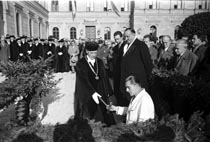
1959
Members of the academy start wearing the robes that are still worn today.
1960
The Commission for Medieval German Literature is founded. Its aim is to investigate how medieval literature was passed down through the ages.
1960
The Commission for Transuranium Research is founded. The Commission carries out research into atoms such as plutonium and uranium until 1975.
1961
The Commission for Semitic Philology is founded. This organisation collaborates on the Dictionary of Classic Arabic published by the German Orient Society.
1961
The Commission for Patrology is founded and continues its research at the academy until 1972.
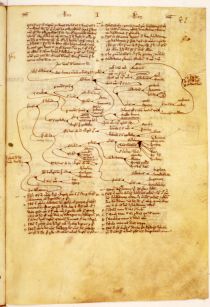
1962
The Commission for the Publication of Unprinted Texts from Medieval Intellectuals is founded. Its role is to produce critical editions of important theological and philosophical texts in Latin from the 12th to the 15th centuries. The programme focuses on researching hand-written sources in the fields of medieval philosophy and theology.
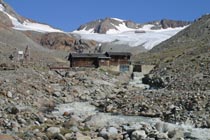
1962
The Commission for Glaciology is founded. It is involved in glaciological research in the Alps and takes part in expeditions. The Commission focuses its efforts on the Vernagtferner glacier in the Ötztal Alps, where is operates the Vernagtbach monitoring station. Located at an altitude of 2,640 metres, it is the highest discharge station in the Eastern Alps.
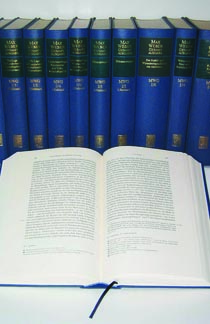
1962
Foundation of the Commission for Social and Economic History, which is tasked with editing the complete works of Max Weber.
1962
Academy members Hans Piloty and Robert Sauer set up the Commission for Electronic Computing (now the Commission for Information Technology). With support from the government of the Free State of Bavaria, they create a shared computing centre for research and teaching open to all Munich-based universities. Today, the organisation is known as the Leibniz Supercomputing centre and is located in Richard-Wagner Strasse 18.
1963
The Commission for the History of Intellectual Development in Late Antiquity is founded.

1965
The Commission for the Publication of the Works of Arnold Sommerfeld is founded and edits his works until 1968.

1967
The WMI moves into a new building in Garching.
1968
The Commission for the Publication of a Second Series of the Acta Conciliorum Oecumenicorum is founded. The Commission continues the work of editing the files of the Ecumenical Councils, which was started by the philologian Eduard Schwartz (1858-1940).
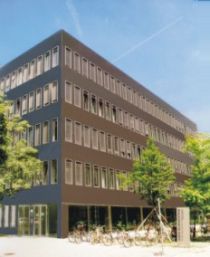
1970
The Leibnitz Supercomputing Centre (LRZ) moves into a new building at Barer Strasse 21 and takes on responsibility for providing IT training at the Technical University of Munich.
1974
The Dalai Lama visits the academy to see the work being carried out by the Commission for Central Asian Studies, which is putting together a dictionary of written Tibetan.
1975
The Commission for Geomorphology is founded. Its core areas of research include mechanisms behind active peneplain formation in the humid tropics, the formation of pediments and broad terraces in mountainous areas as well as geomorphological ice age research.
1975
The first post-War meeting of the Union Académique Internationale in Germany takes place at the academy.

1976
The Commission for the Publication of the Works of Schelling is set up. It is tasked with compiling the works of the former president of the academy Friedrich Wilhelm von Schelling (1827-1842).
1976
The first Werner Heisenberg lecture is held. This series of lectures remains very successful today and is held in collaboration with the Carl Friedrich von Siemens Foundation.
1979
The Academies' Programme is launched. Financed by Federal and state governments, this programme provides a new basis for the funding of long-term projects at the academy.
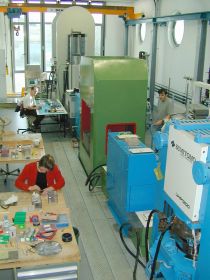
1979
The Commission for Geoscientific High-Pressure Research is set up. The programme provides scientific support for the Bavarian Research Institute of Experimental Geochemistry and Geophysics at the University of Bayreuth. Research work focuses on investigating the relationships between the stability, chemism, structure and physical properties of minerals. The project’s aim is to achieve greater understanding of rock-forming processes.
1979
The Dalai Lama visits the academy for a second time in October.
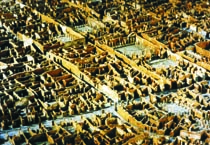
1984
The Commission for Researching Antique Cities is set up to carry out archaeological research into city culture in Greco-Roman antiquity.
1984
8 December: Ceremonial event with President of Germany Richard von Weizsäcker and Minister President Franz Josef Strauß to celebrate the academy’s 225th anniversary.

1986
The Commission for Modern German Literature is founded.
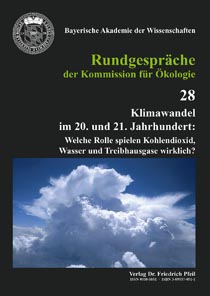
1986
The Commission for Ecology is founded on request from the Bavarian State Minister for Development and Environmental Issues. The Commission aims to address current and probable future ecological issues and to discuss these with groups of experts.
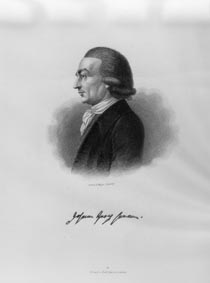
1987
The Commission for the Publication of the Correspondence of F.H. Jacobi is set up.
1990
The Commission for the Publication of Documents relating to Emperor Frederick II is established.
1990
Japan's Emperor Akihito visits the academy for the commemoration of academy member Philipp Franz von Siebold (1796-1866). Siebold travelled to East Asia as a physician in the Dutch army and described Japan as a wonderful country in one of his letters.
1995
For the first time in the history of the academy, two women are accepted as full members: Johanna Narten, professor for Indo-German studies and Indo-Iranian studies, and Regine Kahmann, professor of genetics.
1996
The Commission for the Publication of an Old Occitan Dictionary is founded.
1996
The Commission for Cultural Anthropological Studies is set up.
1999
The academy holds its first open day.

2001
The Commission for “Neurosciences: Sensorimotor Functions in Humans and Machines” is founded with the aim of researching sensorimotor controls for biological and technical systems.
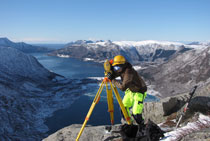
2001
The Commission for Mountain Research is founded. Its task is to promote Alpine-wide, multidisciplinary collaboration in the field of Alpine research and ensure that research findings are put to practical use and made available in the public domain.
2002
Fifty-year anniversary of the German Geodetic Commission at the Bavarian Academy of Sciences and Humanities.
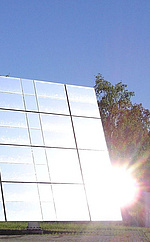
2003
Foundation of the Technology Forum, a standing committee for engineering and applied natural sciences. The committee organises public information and discussion forums at the academy on issues of scientific and general interest.
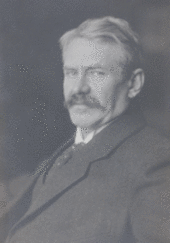
2004
The Commission for Research into the History of Theology is founded. The project focuses primarily on producing a critical edition of the complete works of Ernst Troeltsch.
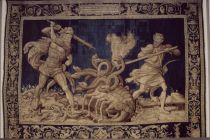
2004
After undergoing preservation work for one year, the Hercules tapestry returns to the plenary hall. It is the only remaining example of the Hercules Series, a collection of ten tapestries produced in the 16th century, that can still be seen it its original form. The tapestry shows Hercules and his nephew Jolaus battling the many-headed hydra of Lerna. By slaying the monster, the hero of antiquity completes the second of the twelve labours he must perform to become immortal. The tapestry comes from the Antwerp studio of Michiel de Bos and is believed to have been completed in 1567.
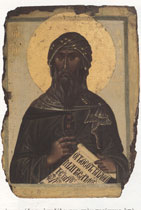
2006
The Commission for the Publication of the Works of John of Damascus is founded. The Commission is tasked with producing a critical edition of the Greek prose manuscripts written by the Byzantium theologian John of Damascus (c. 700 - ca. 750). The project work is coordinated by the Commission for Patrology at the German Academies for Sciences and Humanities. This organisation aims to produce critical editions of early Christian writers.
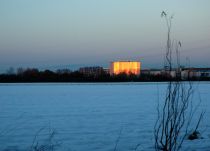
2006
The Leibniz Supercomputing Centre (LRZ) moves to a new building in Garching. The LRZ had outgrown its old home in Barer Strasse. The building did not offer any means of expansion in the medium-term and asbestos was also discovered during renovation work.

2008
The Commission for the History of Science is founded. This is the first research project to focus on the vast body of letters written to and by doctors in German-speaking countries in the early modern period. These sources are stored in many different libraries and archives in Germany and abroad.
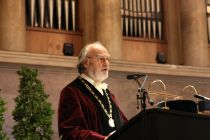
2009
In 2009, the academy celebrates its 250th anniversary with a wide range of events, publications, exhibitions and ceremonies.

2010
The Junges Kolleg (Young Academy) is founded. The organisation aims to support highly talented young scientists in Bavaria.
2011
The project to create an edition of the correspondence between King Ludwig I of Bavaria and Leo von Klenze concludes its work. The organisation started its work in 1998.
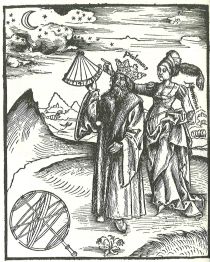
2012
The long-term project on the manuscripts of Ptolemy gets underway. Over the next 25 years, the project will edit Arabic and Latin translations of the main works of Claudius Ptolemy.
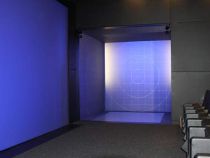
2012
The Centre for Virtual Reality and Visualisation opens on 25 October at the LRZ. The centre enables three-dimensional models of architectural plans to be created and movements inside the earth, which were previously only theoretically mapped, to be represented visually.
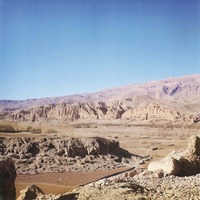
2012
The “Buddhist Manuscripts from Gandhara” project starts its work. The project will run until 2032, by which time it will produce an edition comprising the oldest manuscripts in Indian Buddhism.
2013
An agreement to expand the SuperMUC high-end supercomputer at the Leibniz Supercomputing Centre is signed.
At the end of 2014 / start of 2015, a further 74,304 process cores featuring the latest Intel Xeon technology are added to the existing 155,656 process cores. A further 198 terabytes expand the main memory, taking it from 340 to 538 terabytes. Nine extra petabytes were added to the 12-petabyte background memory. Peak processing speed doubles to 6.4 petaflops.
2014
The Munich Historical Sciences Cluster of Excellence is founded. The historical research institutes in Munich agree to a multilateral collaboration that strengthens the historical sciences in Munich.
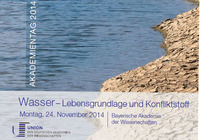
2014
The Academies' Open Day is held for the first time in Munich under the motto of "Water – Basis of Life and Source of Conflict". Over one thousand guests come to the Academies' Open Day in Munich's Residenz palace, including around 350 school children and winners of the academy award for water research ("Akademiepreis Wasserforschung”), which was held as part of the national and state-wide Young Researchers in Science (“Jugend forscht”) competition. Federal Minister Johanna Wanka and Bavarian State Minister Ludwig Spaenle visit the Bavarian Academy of Sciences and Humanities during the course of the Academies' Open Day.
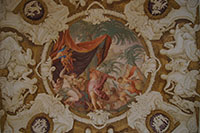
2014
The new academy project “Corpus of Baroque Ceiling Frescoes in Germany” is approved as part of the Academies’ Programme. Ceiling frescoes are an important element of early modern art in Europe. The works by Baroque artists are particularly well known. This is the first time that the corpus of Baroque ceiling frescoes across Germany will be digitally documented, researched and made accessible to the general public via the Internet. The project starts on 1 July 2015, and will be overseen by the Bavarian Academy of Sciences and Humanities. It is based at the Institute of Art History at the Ludwig-Maximilians University (LMU) in Munich and the German Centre for the Documentation of Art History at the Philipps University in Marburg. The project is headed by Stephan Hoppe, professor of art history specialising in the history of Bavarian art at LMU Munich.

2015
Phase two of the SuperMUC project starts at the Leibniz Supercomputing Centre. 86,016 cores in 6,144 processors based on the latest Intel technology with Intel Xeon E5-2697 v3 are added to the existing 155,000 cores. This adds a further 3.6 petaflops to the previous maximum theoretical processing speed of 3.2 petaflops. The phase two communication network is based on Mellanox FDR14 and ConnectIB InfiniBand technology. A further 200 terabytes are added to the existing 288-terabyte main memory.

2015
In 2015, the Bavarian Academy of Sciences carried out one of the most sustainable reorganizations since its foundation, reforming both structure and working methods. The new statutes strengthened the importance of basic research and established flexible working and discussion formats for current issues and the further promotion of young scientists.
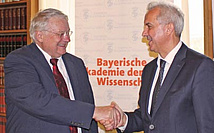
2015
The Bavarian Academy of Sciences and Humanities signs a collaboration agreement with the National Academy of Science and Engineering in Germany (acatech). “Our aim is to establish a stimulating collaboration that will enable both organisations to work together on areas such as fostering young academic talent and align their activities even more closely,” explains President Karl-Heinz Hoffmann.

2015
The Munich Center for Internet Research (MCIR) starts work on 1 December 2015. This new research centre at the academy carries out scientific research into the social changes caused by the Internet and digitalisation.

2016
Zu Beginn des Jahres 2016 nahm das interakademische Projekt „Der Österreichische Bibelübersetzer“ mit Arbeitsstellen an der Universität Augsburg und an der Berlin-Brandenburgischen Akademie der Wissenschaften seine Arbeit auf. Die Forschungsgruppen edieren und kommentieren die Werke eines österreichischen Anonymus, der bereits im 14. Jahrhundert die Bibel für die Laien in die Volkssprache übersetzt hat.
![[Translate to English:] Der Höchstleistungsrechner SuperMUC Foto des Höchstleistungsrechner SuperMUC des LRZs](/fileadmin/_processed_/5/f/csm_supermuc_2e4e751f30.jpg)
2016
Breakthrough for personalized medicine thanks to SuperMUC: A European research team led by Professor Peter Coveney achieved a great success in the field of personalized medicine in 2016: The research group was able to show that it is possible to use the supercomputer to identify which standard breast cancer drugs cannot help these patients on the basis of genome data from patients. The team was able to use the entire supercomputer SuperMUC at the Leibniz Computing Centre (LRZ) of the Bavarian Academy of Sciences with all its resources in an "Extreme Scaling Workshop".
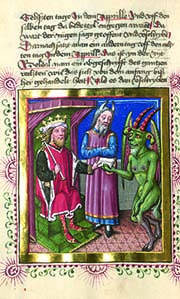
2016
30 years of KdiH: The "Catalogue of German-language Illustrated Manuscripts of the Middle Ages" (Katalog der deutschsprachigen illustrierten Handschriften des Mittelalters, KdiH) celebrated its anniversary in 2016: 30 years ago, the project began its interdisciplinary research at the Academy. On this occasion, a scientific colloquium took place from 7 to 9 September. The KdiH describes, documents and analyses the illustrated manuscripts; it is a working tool for medievalists of all disciplines.

2016
"dhmuc" network strengthens the digital humanities in Munich as a science location: The Bavarian Academy of Sciences and Humanities, the Bavarian State Library, the Ludwig-Maximilians-University Munich and the German Museum have signed a cooperation agreement for the creation of a network for digital humanities in Munich. Under the name "dhmuc. Digital Humanities Munich", the network institutionalizes the successful cooperation of recent years in the working group of the same name. The aim of the network is to strengthen and further develop the digital humanities and social sciences in Munich.
![[Translate to English:] Prof. Dr. Thomas O. Höllmann Portait des Akademiepärsidenten Thomas O. Höllmann](/fileadmin/_processed_/b/f/csm_BAdW_Thomas_Hoellmann_6b8f7a39a8.jpg)
2016
Handover of office: In October 2016, the plenum of the Community of Scholars elected Thomas O. Höllmann as the new Academy President. The sinologist will take office on 1 January 2017. He succeeds the mathematician Karl-Heinz Hoffmann, who did not run for president after two terms of office.
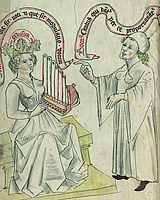
2016
The project Lexicon musicum Latinum medii aevi (LmL) celebrated the successful conclusion of its research work with a two-day international symposium. Since 1960 scientists at the Academy have been working on the dictionary of medieval music terminology. After 56 years, the work is now available in printed and digital form: It comprises a total of 3,733 word articles, 26 accompanying publications and an online dictionary.
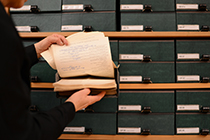
2017
From the slip box to the world wide web: The Bavarian Dictionary goes online. Thanks to many digital tools on the new homepage, interested parties from all over the world can browse, research and do research in the extensive material collection of the Bavarian Dictionary.
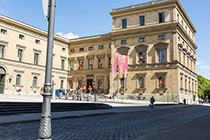
2017
Experience science! Around 3,000 guests will respond to the Academy's call in May and visit the BAdW Open Day.
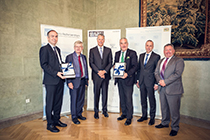
2017
The contract for the delivery of the next supercomputer at the Leibniz Computing Centre (LRZ) of the Bavarian Academy of Sciences is signed. If a ranking of the worldwide supercomputers were to take place today, the promised performance of the SuperMUC-NG would land in third place in the world ranking list dominated by Chinese supercomputers.
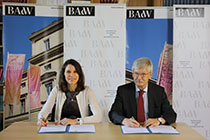
2018
On 13 July, Science Minister Marion Kiechle and Academy President Thomas O. Höllmann signed a target agreement between the Bavarian State Ministry of Science and the Arts and the BAdW. The funds from the Pact for Research and Innovation will be used to promote women in research, strengthen young scientists, modernise governance structures and further open up the Academy to society.

2018
The Bavarian Institute for Digital Transformation (bidt) of the Bavarian Academy of Sciences started its work in September 2018. The bidt was founded with the aim of developing a sound understanding of digital transformation. Its task is to collect and advance questions and discourses on the topic across all disciplines.

2018
Selected events of the Bavarian Academy of Sciences and Humanities are now available online as podcasts, from discussion evenings to lectures. The audio recordings in the "BAdW-Cast" give a broad public access to important discussions in science and society. New episodes can be called up regularly via the free subscription: https://badw.de/die-akademie/presse/podcast.html

2019
Erstmals liegt die 1905 mit großem Erfolg uraufgeführte Literaturoper "Salome" von Richard Strauss, eines der Hauptwerke der musikalischen Moderne, in einer quellenkritischen Edition vor. Erstellt hat die Ausgabe das Projekt "Kritische Ausgabe der Werke von Richard Strauss" an der Bayerischen Akademie der Wissenschaften (BAdW).

2019
Der Thesaurus linguae Latinae ist online: Alle bislang erschienenen Bände sind im Open Access kostenfrei zugänglich. Die Bände A-M und O-P des Thesaurus sind jetzt im Open-Access-Verfahren online und kostenfrei zugänglich – das entspricht rund 80.000 DIN A 4-Seiten. Zudem ist der 228-seitige Index der zitierten Autoren und Werke online. Zeitgleich mit dem online-Gang feierte die Akademie das 125jährige Bestehen des Thesaurus.
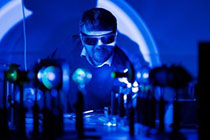
2019
Das Quanteninternet kommt in Reichweite: Abhörsichere Kommunikation zwischen Quantencomputern realisiert. Einem internationalen Team, angeführt von Physikern der Technischen Universität München (TUM), ist es erstmals gelungen, eine sichere Quantenkommunikation im Mikrowellenbereich in einem lokalen Quanten-Netzwerk experimentell zu realisieren. Die neue Architektur ist ein entscheidender Schritt hin zu verteiltem Quantenrechnen. Die Versuche fanden am Walther-Meissner-Institut (WMI) der Bayerischen Akademie der Wissenschaften statt.

2020
Pünktlich zum 100. Todestag Max Webers ist eines der größten deutschen Editionsprojekte nach 1945 erfolgreich abgeschlossen. Am 14. Juni 2020 erschien mit Webers Notizen zu seiner Vorlesung über Praktische Nationalökonomie der 47. und letzte Band der Max Weber-Gesamtausgabe (MWG) der Bayerischen Akademie der Wissenschaften. Die Editionsarbeit begann im analogen und endet im digitalen Zeitalter: Der Abschluss der Gesamtausgabe ist deshalb gleichzeitig der Auftakt zur Arbeit an der digitalen MWG. Im Rahmen des Max Weber-Jahrs 2020 zeigte die BAdW u.a. die Ausstellung "Bürgerwelt und Sinnenwelt. Max Webers München" in der Münchner Seidlvilla (Foto).
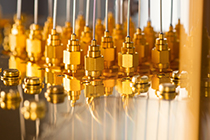
2020
Bayern wagt den Quantensprung: Die Bayerische Staatsregierung fördert in den nächsten zwei Jahren die Quantenwissenschaften und -technologien (QWT) mit etwa 120 Millionen Euro, dies teilte Ministerpräsident Markus Söder im Herbst 2020 mit. Eine Allianz außeruniversitärer Forschungseinrichtungen unter Beteiligung der Bayerischen Akademie der Wissenschaften setzt sich für die Gründung eines Münchner Zentrums für QWT ein, um dem Wissenschafts- und Wirtschaftsstandort Bayern neue Chancen in diesem Innovationsfeld zu eröffnen.

2021
Festliche Klänge zum Projektabschluss: Die BAdW feiert den Abschluss der Orlando di Lasso-Gesamtausgabe. Er war einer der bedeutendsten und produktivsten Komponisten des 16. Jahrhunderts und machte München erstmals zum Zentrum der Musik: Orlando di Lasso, dessen rund 1.350 Werke nun komplett ediert in 47 Bänden vorliegen. Auch eine Datenbank mit Lassos Handschriften ging online.
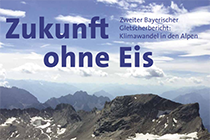
2021
Gletscherbericht mahnt vor schnellerem Gletschersterben. Der Klimawandel trifft die bayerischen Gletscher mit voller Härte. Dies zeigt der Zweite Bayerische Gletscherbericht "Klimawandel in den Alpen".
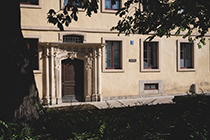
2021
Ort des lebendigen akademischen Dialogs: BAdW und Universität Würzburg gründen Schelling-Forum. Die BAdW und die Julius-Maximilians-Universität Würzburg gründen das Friedrich-Wilhelm-Joseph-Schelling-Forum. Es soll den bestehenden wissenschaftlichen Austausch zwischen beiden Einrichtungen intensivieren und ein realer sowie ideeller Raum des lebendigen wissenschaftlichen Dialogs werden.
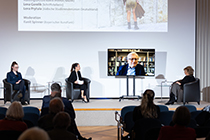
2021
Judentum in Bayern in Geschichte und Gegenwart: Neue Ad hoc-Arbeitsgruppe der BAdW gestartet. 1700 Jahre jüdisches Leben in Deutschland stehen im Mittelpunkt des Festjahres 2021. In den letzten drei Jahrzehnten ist in Deutschland und Bayern ein deutlicher Anstieg jüdischen Lebens zu verzeichnen, zugleich nimmt seit einiger Zeit die Zahl antisemitischer Vorfälle zu. All dies verleiht der Vermittlung jüdischer Geschichte und Kultur zusätzliche Aktualität. Vor diesem Hintergrund startet an der Bayerischen Akademie der Wissenschaften die Ad hoc-Arbeitsgruppe „Judentum in Bayern in Geschichte und Gegenwart“.


